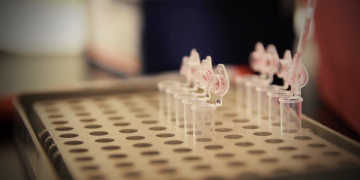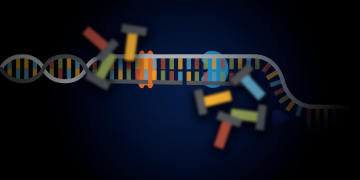
A Superior Method for Parallel Analysis of RNA and Protein Expression from Cell Culture Lysates
It is imperative to analyze both the transcriptional and translational profiles for a complete understanding of the functioning of genes. Here we describe a simple protocol that enables parallel analysis of both RNA and protein from single cell culture lysates. See how this workflow could save time and money and yield more reliable data than the traditional protocols used.

The Importance of Quality PCR Plastics
Do we ever think seriously about PCR plates, seals, and tubes as contributing to the quality of our gene expression results? Chances are that these PCR plastics are viewed just as labware by most people. In this article we bring out how simple factors, such as PCR plate rigidity, color of the wells, and adhesiveness of plate seals, can affect your gene expression results and show why it is important to use quality PCR plastics.

Using PrimePCR™ Gene Expression Assays to Understand Breast Cancer Metastasis
Tumor metastasis is a complex process. It requires the ability of the cancer cells to invade their surroundings and travel to distant sites and survive. Dr. Traci Lyons studies the mechanism of COX-2 functioning in the metastasis of breast cancer cells. Find out how Dr. Lyons used Bio-Rad’s PrimePCR™ Assays to confirm COX-2 knockdown at the mRNA level.

Using PrimePCR™ qPCR Assays to Understand Breast Cancer Metastasis
Traci Lyons describes how PrimePCR Assays ended her laboratory’s struggle to find a qPCR assay that could reliably detect transcription of the cyclooxygenase-2 (Cox-2) gene, which they had identified as potentially prometastatic. Using the PrimePCR Assay for Cox-2, researchers in her lab were finally able to verify cyclooxygenase-2 knockdown, which is a necessary step toward confirming its role in breast cancer metastasis.

New Product Feature: gDNA-Free cDNA in Two Simple Steps
Removing genomic DNA contamination from cDNA preparations is a challenge. All currently available methods are time consuming, could lead to sample loss, and are not efficient. Bio-Rad’s iScript™gDNA Clear cDNA Synthesis Kit tackles these issues and makes this step effortless. This article presents the performance data of the kit and describes how simple and efficient it is to use the kit for gDNA removal.

How to Design Hydrolysis Probes for qPCR
What’s the optimal melting temperature for a hydrolysis probe? How long should your probe be? And why should you avoid 5′ guanines like the plague? This episode answers these questions and gives you five simple tricks for designing the perfect hydrolysis probe.

So, How Can the Sso7d Fusion Polymerase Technology Help Your PCR?
During a PCR reaction, it is imperative for the DNA polymerase to remain attached to the template while extending the new strand. This association is jeopardized under challenging PCR conditions and when amplifying longer DNA fragments. See how Sso7d, a small protein capable of binding with the polymerase, helps in stabilizing this association and increasing PCR efficiency.

Six Tips for Increasing the Reproducibility of qPCR Experiments
Follow these six simple tips and you’ll increase the reproducibility of your qPCR experiments.

Bio-Rad’s PrimePCR™ Assays and Panels Eliminate Multiple Steps from Your qPCR Workflow
A qPCR workflow involves multiple steps, each of which adds to the time and cost of the entire experiment. The PrimePCR™ Assays and Panels from Bio-Rad eliminate a number of these steps with their predesigned primers and probes and help with the assay design. See what steps they eliminate and how that would help expedite your qPCR experiment.

How to Minimize Contamination in qPCR Experiments
Are you using ethanol to prep your bench for qPCR? Watch this episode to find out why that might be a bad idea. We’re sharing seven tips for minimizing contamination of qPCR experiments.
